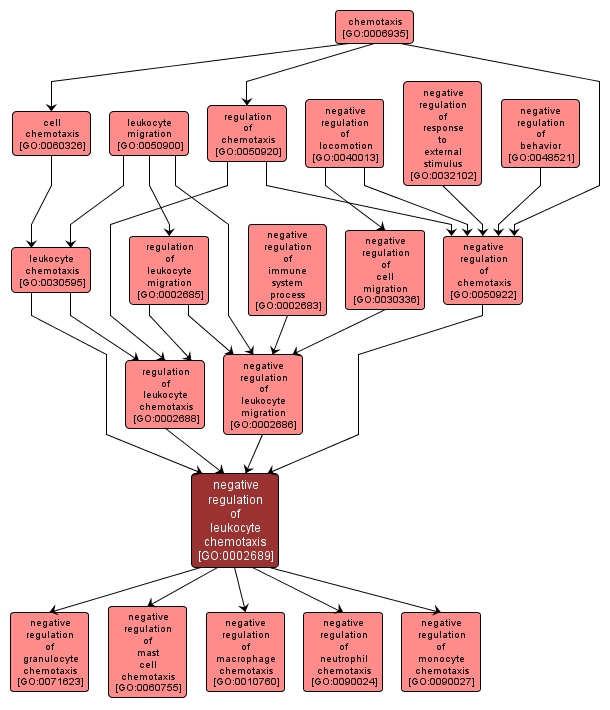GO TERM SUMMARY
|
| Name: |
negative regulation of leukocyte chemotaxis |
| Acc: |
GO:0002689 |
| Aspect: |
Biological Process |
| Desc: |
Any process that stops, prevents, or reduces the frequency, rate, or extent of leukocyte chemotaxis. |
Synonyms:
- downregulation of leukocyte chemotaxis
- negative regulation of leucocyte chemotaxis
- inhibition of leukocyte chemotaxis
- down regulation of leukocyte chemotaxis
- down-regulation of leukocyte chemotaxis
- negative regulation of immune cell chemotaxis
|
|

|
INTERACTIVE GO GRAPH
|














